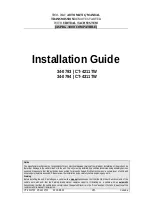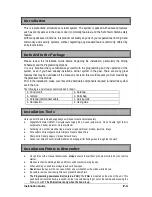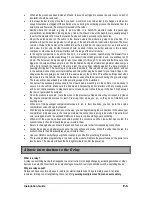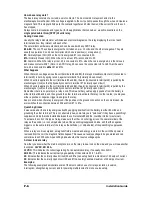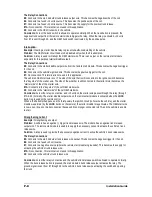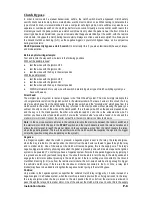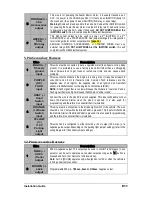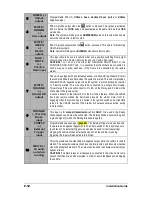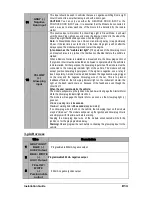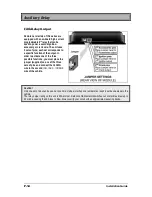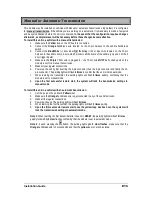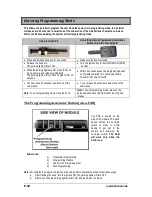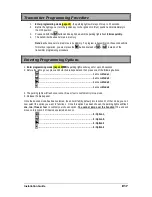
Installation Guide
P.5
•
When all the wires have been tested and found, they can be stripped to expose the wire (over one inch of
insulation should be removed).
•
It is always better to strip more than you need. A common way cold solder joints happen is when not
enough insulation is stripped off the vehicle's wire, so during the soldering process the insulation from the
wire melts and flows into the connection instead of the solder.
•
Decide where the module is going to be mounted. It is ALWAYS mounted inside the passenger
compartment, and NEVER in the engine bay. Under the driver's side of the dash there is usually enough
room for the module to fit. Once the location has been decided, proceed to the next step.
•
Mount the antenna and run the cable to the location where the module is going to be mounted. The
antenna will get the best range when it is high up in the vehicle, and not obstructed by metal. The most
common choice is the center of the windshield at the top, behind the rear view mirror, and at least one
inch below the tint strip. Another location should be used if there is another antenna in this location,
compass, or other device that may interfere with the range of the start module.
•
In the engine compartment, mount the hood pin, in a suitable location. Search along the firewall for an
OEM grommet you run the wires through. If you cannot find an OEM grommet to use, you will have to drill
a hole. The hole must be big enough for all of your wires to fit through. To be safe drill the hole out a little
bigger so the wires will have ample room. We recommend using an aftermarket grommet whenever you
drill a hole through the firewall. This will protect the wires from rubbing against the bare metal and
possibly shorting out. The next step is to pre-wire the module. This is done on your work bench, and not
in the vehicle. Connect any external modules and relays that may be needed for you install. Tape or tie-
strap wires that are going to be routed to the same areas of the vehicle. This will keep things neat when
the module is in the vehicle. The fuses on the power wires should be removed during the pre-wire stage.
The fuses will not be put back in until the powering stage of the installation.
•
Connect all the necessary accessories to the module before mounting it in the vehicle. Use tie-straps to
secure it to the vehicle. Make sure the module and harnessing do not interfere with any moving parts,
and do not obstruct access to diagnostic ports, or fuse boxes. It should be up in the dash, high enough
that it won't get kicked by accident.
•
Once the module is secured, route the wires to the previously stripped wires they correspond to (leave
the engine compartment wires for last). Tie strap them up as you go, so they do not interfere with
anything else.
•
When all of the passenger compartment wires are ran to their locations, you can route the engine
compartment wires through the firewall.
•
With the engine compartment wires out the way, you can begin making the connections in the passenger
compartment. Strip about an inch of wire past where the connection is going to be made. This extra bit of
wire is wrapped around the exposed OEM wire to secure in place while you are soldering.
•
When all of the wires have been connected, solder the connections. When the solder has cooled, the
connections are then individually taped up, to isolate them.
•
Return to the engine bay and route the tach and hood pin wire to their corresponding connections.
•
Solder the engine compartment wire once the connections are made. When the solder has cooled, the
connections are then individually taped up, to isolate them.
•
Use your DMM to verify that your ground location is good before grounding the module.
•
The last step before programming is to power up the module. Replace the power fuses on the power wire
fuse holders. The module will flash the Park lights twice to confirm the power-up.
A basic introduction to the Relay
What is a relay?
A relay is a switching device that responds to a small current or voltage change by activating switches or other
devices in an electric circuit such as an electromagnetic switch, remote controlled switch, a switching device.
Why are relays used?
Relays can have several purposes in remote car starter installations. They are mainly used for isolation,
inversion, interruption, strengthening current, and for powering multiple wires from one source safely.

